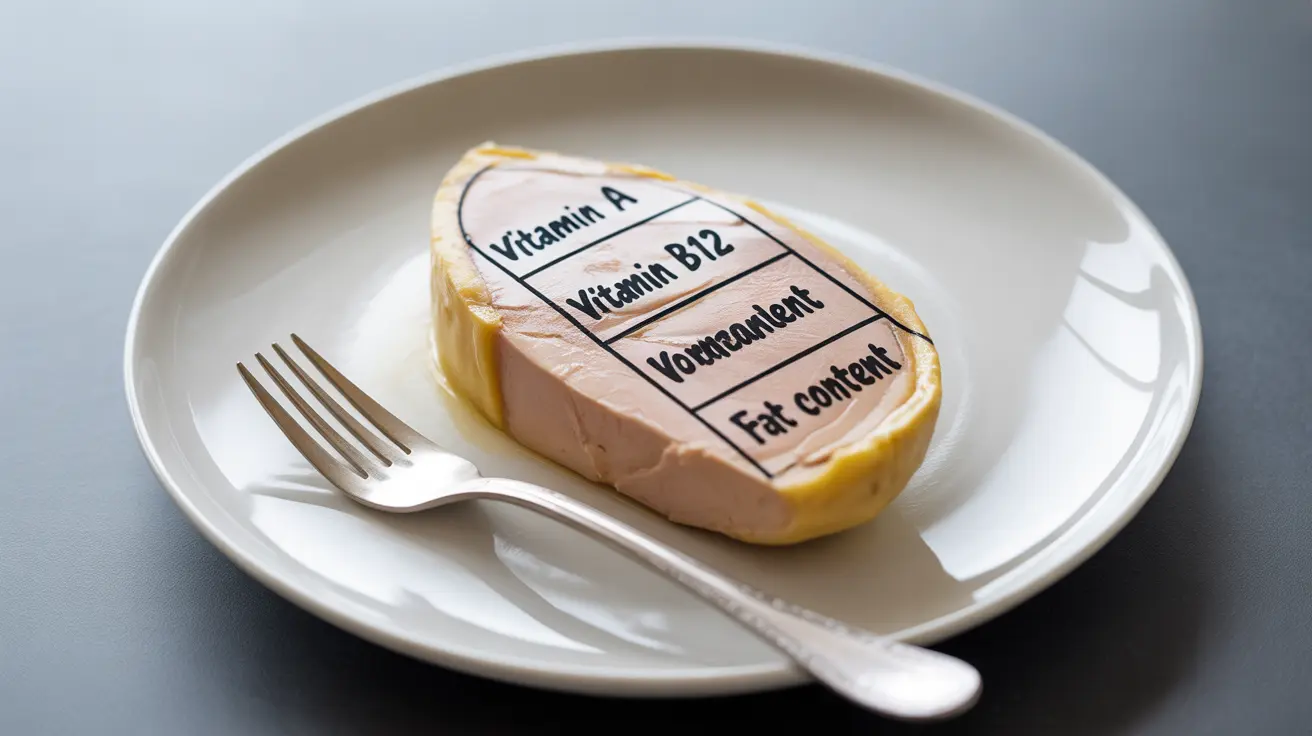Foie gras, the controversial French delicacy made from duck or goose liver, has long been prized in fine dining establishments worldwide. While debates surrounding its production methods continue, understanding the nutritional profile of foie gras provides valuable insight into its potential health implications. This rich, buttery delicacy offers a unique combination of nutrients that set it apart from conventional meat products.
For those curious about incorporating foie gras into their diet or simply wanting to understand its nutritional value, examining its vitamin content, mineral composition, and caloric density is essential. Like other organ meats, foie gras presents both nutritional benefits and potential health considerations that warrant careful evaluation.
Nutritional Composition and Calorie Content
Foie gras stands out as one of the most calorie-dense foods available, containing approximately 462 calories per 100-gram serving. This high caloric content stems primarily from its exceptional fat content, which comprises roughly 44 grams per serving. The remaining macronutrients include about 11.4 grams of protein and minimal carbohydrates.
The fat composition in foie gras consists of approximately 15.5 grams of saturated fat, 18.7 grams of monounsaturated fat, and 4.5 grams of polyunsaturated fat. This fatty acid profile contributes significantly to both the delicacy's distinctive texture and its concentrated energy content.
Despite its high fat content, foie gras provides substantial protein, making it a complete protein source containing all essential amino acids. However, the protein-to-calorie ratio is considerably lower than that found in lean meats, requiring smaller portion sizes for those monitoring their caloric intake.
Vitamin and Mineral Profile
Foie gras delivers an impressive array of vitamins, particularly those that are fat-soluble. A single 100-gram serving provides an extraordinary amount of vitamin A, containing over 8,500 international units, which represents nearly ten times the daily recommended value. This vitamin A content surpasses most other animal products and supports vision health, immune function, and cellular growth.
The vitamin B12 content in foie gras is equally remarkable, providing approximately 54 micrograms per serving – more than 20 times the daily recommended intake. This makes foie gras one of the richest dietary sources of vitamin B12 available, supporting nervous system function and red blood cell formation.
Additional B vitamins present include folate, riboflavin, and pantothenic acid, contributing to energy metabolism and cellular function. The mineral profile includes significant amounts of iron, selenium, and copper, with iron content reaching approximately 18 milligrams per 100 grams, supporting oxygen transport and preventing anemia.
Fat Content and Cardiovascular Considerations
The substantial fat content in foie gras raises important considerations for heart health and cholesterol management. Each serving contains approximately 255 milligrams of cholesterol, representing about 85% of the daily recommended limit. This high cholesterol content requires careful consideration for individuals with existing cardiovascular concerns or those following cholesterol-restricted diets.
The saturated fat content, while significant, is balanced by a notable proportion of monounsaturated fats, which may help mitigate some negative cardiovascular effects. Monounsaturated fats have been associated with improved lipid profiles when consumed as part of a balanced diet, though the overall high fat content still necessitates moderation.
The omega-3 fatty acid content in foie gras, while present, is relatively modest compared to fatty fish sources. However, the overall fatty acid composition contributes to the absorption of fat-soluble vitamins, enhancing the bioavailability of vitamins A, D, E, and K.
Nutritional Comparison with Other Organ Meats
When compared to chicken liver, foie gras contains significantly more calories and fat but provides similar vitamin B12 levels. Chicken liver offers approximately 167 calories per 100 grams with only 4.8 grams of fat, making it a leaner option while still delivering substantial vitamin A and iron content.
Beef liver presents another interesting comparison, containing about 175 calories per 100 grams with moderate fat content. While beef liver provides excellent iron and vitamin A levels, foie gras surpasses it in vitamin B12 content and overall vitamin A concentration. However, beef liver offers a better protein-to-fat ratio for those seeking lean protein sources.
Duck liver, the base ingredient for foie gras, undergoes significant nutritional changes through the force-feeding process that creates the enlarged, fatty liver characteristic of foie gras. Regular duck liver contains fewer calories and less fat while maintaining similar vitamin and mineral profiles, though in lower concentrations.
Potential Health Risks and Safety Concerns
The consumption of foie gras presents several health considerations that extend beyond its high caloric and fat content. The production methods used to create foie gras may influence its nutritional composition and safety profile, though research in this area remains limited.
Individuals with liver disease should exercise particular caution when consuming foie gras, as the high fat content and cholesterol levels may exacerbate existing conditions. The substantial vitamin A content, while beneficial in moderate amounts, can become toxic when consumed excessively, potentially leading to hypervitaminosis A.
Food safety considerations include proper handling and preparation to prevent bacterial contamination, as with all organ meats. Foie gras should be stored at appropriate temperatures and consumed fresh to minimize risks of foodborne illness. Additionally, individuals taking certain medications, particularly blood thinners, should consult healthcare providers before consuming foods high in vitamin K.
The ethical considerations surrounding foie gras production may also influence dietary choices, though these factors fall outside the scope of nutritional analysis. Some regions have implemented restrictions on foie gras production and sale based on animal welfare concerns.
Frequently Asked Questions
What are the main nutrition facts and calorie content of foie gras?
Foie gras contains approximately 462 calories per 100 grams, with 44 grams of fat, 11.4 grams of protein, and minimal carbohydrates. It provides exceptional amounts of vitamin A (over 8,500 IU) and vitamin B12 (54 micrograms), along with significant iron, selenium, and copper content. The high calorie density makes portion control essential for balanced nutrition.
Is foie gras a healthy source of vitamins and minerals like vitamin B12 and vitamin A?
Yes, foie gras is an excellent source of both vitamin B12 and vitamin A, providing more than 20 times the daily recommended amount of B12 and nearly ten times the daily value of vitamin A per serving. It also supplies substantial amounts of iron, folate, and selenium. However, the high fat and cholesterol content require moderation in consumption.
How do the fats in foie gras affect heart health and cholesterol levels?
Foie gras contains high levels of saturated fat (15.5g per 100g) and cholesterol (255mg per serving), which may negatively impact cardiovascular health when consumed frequently. While it does contain beneficial monounsaturated fats, the overall fat profile suggests limiting intake, especially for individuals with heart disease or elevated cholesterol levels.
How does foie gras compare nutritionally to other meats like chicken or beef liver?
Foie gras is significantly higher in calories and fat compared to chicken liver (167 calories, 4.8g fat) and beef liver (175 calories, 6.5g fat per 100g). While all three provide excellent vitamin A and B12, foie gras offers the highest concentrations but with much greater caloric density. Other organ meats provide similar nutrients with better protein-to-fat ratios.
Are there any health risks or safety concerns associated with eating foie gras?
Health risks include potential vitamin A toxicity from excessive consumption, cardiovascular strain due to high saturated fat and cholesterol content, and complications for individuals with liver disease. Food safety requires proper handling and preparation to prevent bacterial contamination. Those on blood-thinning medications should consult healthcare providers before consumption due to vitamin K content.




